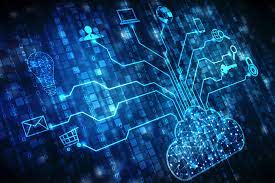Technology keeps advancing at an accelerated pace and sometimes it gets difficult to keep up with all the new terms. Edge computing is now something you might come across in your morning paper. Let’s take a look at this new development and also see how it differs from Cloud Computing.
In cloud computing, the major processing and storage functions are done through the cloud without the need for any physical hardware in the actual location where it needed. This increases latency since a large amount of data has to be transferred to and from the cloud network. The amount of data that can be generated daily with the vast amount of IoT devices is extremely large, transferring and storing all that data takes more time than is ideal.
Edge computing is a design philosophy that brings computing resources and storage closer to the location where it is needed in order to reduce the drawbacks of long-distance communication. This is done by combining the generous resources now available via the many IoT devices in any modern home. IoT stands for Internet of Things, it is a system of interconnected computing devices with the ability to transfer data without requiring human intervention. It simply refers to all the devices in a house that connects to the internet. Television, Air conditioning, Refrigerator, Washing Machine, etc. are some common examples. In fact, modern homes with all these IoT devices already use principles of edge computing as the data that is transferred to the user is already been processed individually by each of these devices, at least in most cases.
Since Cloud computing requires a lot of investment in extremely capable hardware and storage at the data center, its upkeep becomes more and more expensive as time passes, Edge Computing is one of the answers to this problem, with less input required from the cloud if the processing power is located near to the physical need, storage costs also go down as processed data is transferred to cloud. Response times also decrease as the time for data transfer becomes unnecessary.
There is a need for more capable hardware and storage solutions in a long term cloud network but till then edge computing will help lighten the load.

